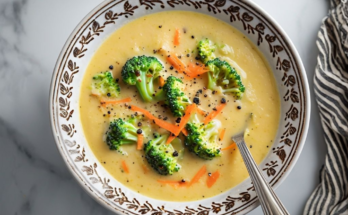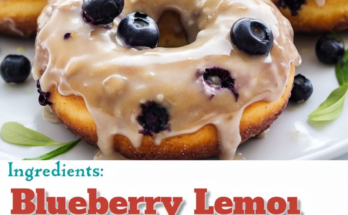Choosing the best fruit at the grocery store can feel like a gamble if you’re not sure what to look for. However, by paying close attention to the appearance, texture, and color of the fruit, you can increase your chances of picking the sweetest, juiciest, and most flavorful options. This detailed guide will help you master the art of selecting 11 popular fruits with confidence, using a few simple visual and physical cues.
1. Oranges
- Shape: Opt for oval oranges rather than round ones. Oval oranges tend to have thinner skin and juicier flesh, making them sweeter and more flavorful.
- Navel Size: A smaller navel typically signals a sweeter, more flavorful orange. Large navels can indicate the presence of a secondary fruit inside, which can reduce the sweetness.
- Color: Look for a deep, vibrant orange hue. Even coloring across the fruit indicates ripeness, while patches of green may mean the fruit is under-ripe.
- Weight: Heavier oranges are usually juicier. When you hold an orange, it should feel dense and weighty for its size.
- Stem: A fresh green stem signals that the orange was recently harvested and is likely to be fresher and more flavorful.
2. Watermelon
- Field Spot: A yellow or golden field spot (the part of the watermelon that was resting on the ground) suggests that it ripened naturally on the vine and will be sweeter. Avoid white or green spots.
- Belly Button (Stem End): A brown belly button or stem end indicates that the watermelon was harvested at its peak ripeness. A green belly button suggests it was picked too early.
- Sound Test: Tap the watermelon gently. A deep, hollow sound means the melon is full of water and will be crisp and juicy inside.
- Shape: Choose a watermelon that is uniform in shape, ideally round. Elongated melons may be less sweet and have a more fibrous texture.
3. Cantaloupe (Muskmelon)
- Netting: The surface of a ripe cantaloupe should have a rough, raised netting pattern. If the skin feels smooth, the melon is probably underride.
- Color: A beige or golden color near the stem end indicates ripeness. Avoid melons with too much green on the skin.
- Stem End: Look for a slight indentation where the stem was attached. This indicates the melon was allowed to ripen fully on the vine.
- Aroma: A strong, sweet fragrance near the blossom end is a good indicator of flavor and ripeness.
4. Bananas
- Color: Ripe bananas should have a bright yellow peel with a few brown spots, which indicates they’re sweet and ready to eat. If the peel is entirely green, the bananas are still ripening.
- Green Bananas: If you need bananas to ripen over a few days, choose ones that are mostly green and let them ripen at home.
- Avoid: Stay away from bananas with dull, grayish skins. These fruits were likely stored improperly and may not have the best flavor or texture.
5. Pineapple
- Color: A ripe pineapple has golden yellow skin, particularly around the base. Too much green on the fruit indicates it’s underride.
- Leaf Test: Gently pull a leaf from the crown of the pineapple. If it comes out easily, the fruit is ripe. If it resists, the pineapple may need more time to ripen.
- Aroma: The bottom of the pineapple should have a sweet, tropical fragrance. This indicates the fruit is ripe and ready to eat.
- Firmness: While pressing gently, the pineapple should feel firm but yield slightly under pressure. A hard, unyielding pineapple is not yet ripe.
6. Strawberries
- Color: Choose strawberries that are a deep, vibrant red. Avoid those with green or white patches, as they’re under-ripe.
- Size: Smaller strawberries often have more intense flavor and sweetness compared to larger ones, which can sometimes be watery.
- Leaves: Bright green leaves on the stem are a sign of freshness. Wilted or dry leaves may indicate that the strawberries are past their prime.
- No Moisture: Avoid strawberries with moist or mushy spots, as this can be a sign of mold or over-ripeness.
7. Apples
- Skin: Look for apples with smooth, shiny skin and avoid any with wrinkles, as wrinkles can indicate dehydration or aging.
- Color: A deep, rich color is typically a good sign that the apple is ripe. A dull or faded appearance might suggest a lack of flavor.
- Firmness: When gently pressed, apples should feel firm and crisp. If the apple feels soft or squishy, it may be overripe or old.
8. Mangoes
- Color: While mangoes come in different varieties, most will have a yellow to red blush when ripe. However, some varieties can stay green even when ripe, so knowing the specific variety can help.
- Texture: A ripe mango should yield slightly when squeezed, indicating it’s softening up and ready to eat.
- Aroma: A sweet, fruity fragrance from the stem end signals ripeness. If there’s no smell or a sour odor, the mango may not be ripe yet.
9. Avocados
- Color: For varieties like Hass, look for a deep green or nearly black skin. A lighter green skin indicates the avocado is still under-ripe.
- Firmness: Gently press the avocado. If it yields slightly to pressure, it’s ripe and ready to eat. If it feels hard, let it ripen for a few more days.
- Stem Test: Flick off the small stem or cap at the top of the avocado. If the flesh underneath is green, the avocado is ripe. If it’s brown, it’s overripe.
10. Grapes
- Color: Look for grapes that have deep, rich colors—whether purple, red, or green—without any dullness or discoloration.
- Firmness: Grapes should feel firm and plump when gently squeezed. Soft or wrinkled grapes are signs of over ripeness.
- Attachment: Grapes should still be firmly attached to the stem. Detached grapes may have been mishandled or stored too long.
11. Peaches
- Color: Ripe peaches have a vibrant yellow-orange color, often with a red blush. Avoid peaches with green spots, as they indicate the fruit is under-ripe.
- Firmness: Gently press on the peach; it should give slightly, indicating that it’s ripe and juicy.
- Aroma: A strong, sweet scent at the stem end means the peach is ready to eat and bursting with flavor.
Final Tips for Picking the Best Fruits:
- Weight Matters: Heavier fruits are generally juicier and more flavorful.
- Even Color: A uniform color across the fruit often indicates even ripeness.
- Avoid Bruises: Bruised or soft spots indicate that the fruit is overripe or damaged. Always opt for fruits that are firm and smooth.
- Smell Check: A pleasant aroma is a good indicator of ripeness and sweetness. If it smells off or sour, it might not be the best choice.
By following these visual and tactile cues, you’ll be able to select the most delicious and flavorful fruits every time you shop. Happy fruit hunting!



